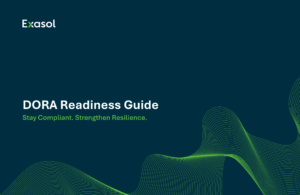
6 Benefits of Real-Time Analytics
Forward-thinking leaders know that they need to build a strong data culture to achieve their business objectives. Data analytics enables organizations to personalize customers’ experiences, monitor industry trends, and identify new products or services. Until recently, batch-style analytics were standard for most organizations. However, batch-style analytics only offer insights in hindsight, meaning organizations may wait hours, days, or weeks before extracting value from their data. In our modern, fast-moving world, organizations need real-time insights so they can maintain a competitive edge.
By understanding the benefits that real-time analytics provide, business leaders can build modern business strategies that enable revenue growth.
Real-Time Analytics, Explained
Real-time analytics is the process of preparing, measuring, and analyzing new data as soon as the system ingests it. With up-to-the-minute data, leaders can make informed, strategic decisions based on the latest information.
Traditionally, organizations relied on batch-style analytics that focused on historical data. That means systems ingest the data at set intervals, then analyze changes between the current and previous batches. However, the delayed analyses between batches prevent agile movements and strategic decision-making, leaving the organization unable to respond to changes in the market.
Real-time data analytics provide nearly instantaneous insight that decision-makers across the organization need to streamline operations, enhance customer experiences, and respond to buyer demands.
6 Benefits of Real-Time Analytics
Often, people think about analytics as a way to quantify broader insights, like looking for market trends across various geographic regions and customer demographics. However, real-time analytics are valuable to a range of departments and industries.
While a marketing department may use real-time analytics to analyze a social media campaign, a customer success team may use them to understand call times. With access to real-time data analytics, frontline managers and workers can make informed, in-the-moment decisions.
Informed Decision Making
While teams may have a “gut feeling,” they need the data to support their decisions, and they need it quickly. With real-time analytics, teams can access their dashboard and data at all times, no matter where they work.
For example, real-time data created by point-of-sale systems empowers retailers to cross-sell and up-sell products, especially for online purchases. Likewise, physical retail locations can use data analytics to ensure that in-demand items are always in stock.
Increased Business Efficiency
Real-time analytics enable organizations to continuously evaluate key performance indicators (KPIs) across the business. When organizations replace manual processes with automation, they can quickly identify data loading issues, enabling them to prevent data processing errors that can create time and resource losses. By eliminating inefficiencies at the data ingestion and processing levels, organizations gain insights that enable them to differentiate themselves in the market.
For example, organizations can use data analytics to track their accounts receivables in a more timely manner, allowing them to optimize processes.
Quickly Address Operational Issues
By collecting and measuring data ingested from equipment and operations, organizations can reduce maintenance costs and streamline delivery processes. Many companies use real-time data analytics to monitor factory equipment, enabling them to estimate maintenance needs more precisely.
For example, many organizations collect and analyze real-time weather and traffic data to reroute and optimize delivery routes. Addressing these issues using real-time analytics saves money while eliminating service or product disruptions.
Better Risk Management
By combining historical data with real-time analytics, organizations can enhance their risk management processes. Real-time analytics enable leadership to understand the impact of financial market fluctuations or global events.
For example, an organization might use real-time analytics to assess the impact of a hurricane on a product or customer demographic. By continuously ingesting and analyzing data, they can determine whether their data strategy worked as intended, needs adjustment, or would be useful in the future.
Improved Customer Experience
A positive customer experience is critical to ensuring customer loyalty. Happy customers share their experiences with friends, family, and coworkers, which generates more business and increases revenue. With real-time analytics, organizations can collect customer feedback, respond to suggestions, and improve processes without delay.
For example, many modern businesses use customer feedback terminals so they can respond to issues and prevent blind spots. Gathering and responding to this data in real time is critical to optimizing the value of these technologies.
Unlock New Business
When companies analyze data in real time, they can identify new products and services. As customer demands change, organizations using real-time analytics can adapt in response. As customers change their buying patterns, organizations with real-time analytics can adjust how they allocate resources. In some industries, flexibility is critical to generating more revenue.
For example, a hotel might change its rates in response to current events, like the weather or a surprise press conference.
4 Challenges of Implementing Real Time-Analytics
Although real-time analytics enable organizations to grow revenue and margins, many companies struggle to adopt the latest technology due to a lack of people, processes, technologies, or budget. Some of the most common challenges organizations face when adopting real-time analytics include the following:
Accuracy and Accessibility
Data is only valuable if it is accurate and accessible. When data is spread out across multiple programs and verticals, it can become desynchronized or even unusable.
As organizations adopt real-time analytics, they can streamline operations by creating a standardized vocabulary across all users and implementing a modernized data warehouse to keep all data current and accessible.
Lack of System Architecture
Many companies lack a data analysis architecture with high-speed processing. Real-time data analytics requires a scalable architecture that can handle data volume spikes.
Organizations should use a system architecture that can capture real-time and offline data without undermining reliability.
Lack of Internal Talent
Finding the right people to manage the data architecture takes time and effort, especially when competing with limited budgets. Further, most databases contain sensitive company and customer information, meaning that organizations need to consider how well their current IT and security teams can protect this information.
Organizations should look for self-tuning solutions with robust security to help them overcome these challenges.
Initial Investment
When an organization shifts its business model, it must consider pricing. With data analytics, many organizations struggle to find cost-efficient solutions that enable them to scale their operations over time. Further, many organizations find themselves unable to estimate their future needs accurately, meaning that they cannot appropriately determine the initial investment.
For organizations that want to build a data culture, a pay-as-you-go pricing model enables cost-efficient flexibility.
Final Thoughts
Real-time analytics is critical for organizations that need to gain a competitive advantage. In the modern business landscape, making informed decisions supported by metrics is vital to maneuverability in the marketplace.
With Exasol’s real-time analytics database, organizations can achieve their financial and data analytics goals. For over twenty years, Exasol has provided the fastest analytics database on the market with an affordable pay-as-you-use model. Our open, flexible, and extensible architecture ensures that your organization can build Exasol into its data environment, enabling you to make the most of your data.





